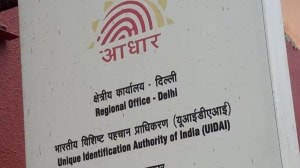Digital payment application Google Pay is ramping up investments in its technology infrastructure to reduce payment failures on its platform and regain market share.
“Designing for scale and reliability is important for us. To make this happen, we have invested deeply in technology infrastructure to support enhanced volumes, collaborating with National Payments Corporation of India (NPCI) and banking partners to make end-to-end payment experience more robust and scalable,” said Ambarish Kenghe, vice president – product management.
Google Pay’s market share in terms of volume has fallen to 34.2% in January 2023 from 36.3% in January 2021, while that of the competition grew.
PhonePe’s market share has increased to 46.7% in January from 41.2% two years ago. Similarly, Paytm Payments Bank application’s market share rose to 14.6% from 14.2% two years back.
A key reason behind the fall in Google Pay’s market share has been higher incidence of payment failures on its platform. Its issues have been accentuated by a rise in transactions on the platform, led by the emergence of Unified Payments Interface (UPI). Besides, the UPI infrastructure of its partner banks has also been unable to handle the rise in transactions on the platform.
PhonePe facilitated transactions worth Rs 6.5 trillion in January, almost 50% higher than Google Pay’s Rs 4.4 trillion, and Paytm Payments Bank’s Rs 1.4 trillion.
“This is a competitive market and the ecosystem has had teething challenges, which resulted in some transaction share drop from the peak on Google Pay. We have worked with players across the ecosystem to make sure that all the participants on this network are ready for multiple-fold increase in UPI transactions that we are going to see in future,” Kenghe said.
“We have always had an ecosystem approach and will continue to have that. Digital payments in India have penetrated to just about 300 million users, and it is reasonable to expect the leader board to stay quite dynamic for the next few years as this footprint expands,” he added.
Google Pay has adopted measures to deal with high payment failures. For instance, it is working closely with banking partners to shift selected functionalities to cloud for improving reliability of the infrastructure.
The payment platform will enable smart routing to handle the rise in transactions. Under smart routing, Google Pay automatically identifies an alternate path to complete a payment if money transfer cannot happen through one route.
The company has partnered with various payment service provider banks like State Bank of India, HDFC Bank, Axis Bank and ICICI Bank. It has also partnered with NPCI on initiatives like UPI Lite, which will enable low-value payments that are lighter on the core banking infrastructure.
“We remain committed to building deep partnerships with banks and financial institutions to create greater economic opportunity for the financial ecosystem and consumers in India,” Kenghe said.
“As the scale of payments in India has grown tremendously, the complexity of our services, and those of our partners has grown significantly. We have been increasing our operational observability and monitoring capabilities, and are also working closely with our partners to do more in this area. We are scaling our services in data centers across India to enhance our ability to meet growing demand along with our partners,” he said.








